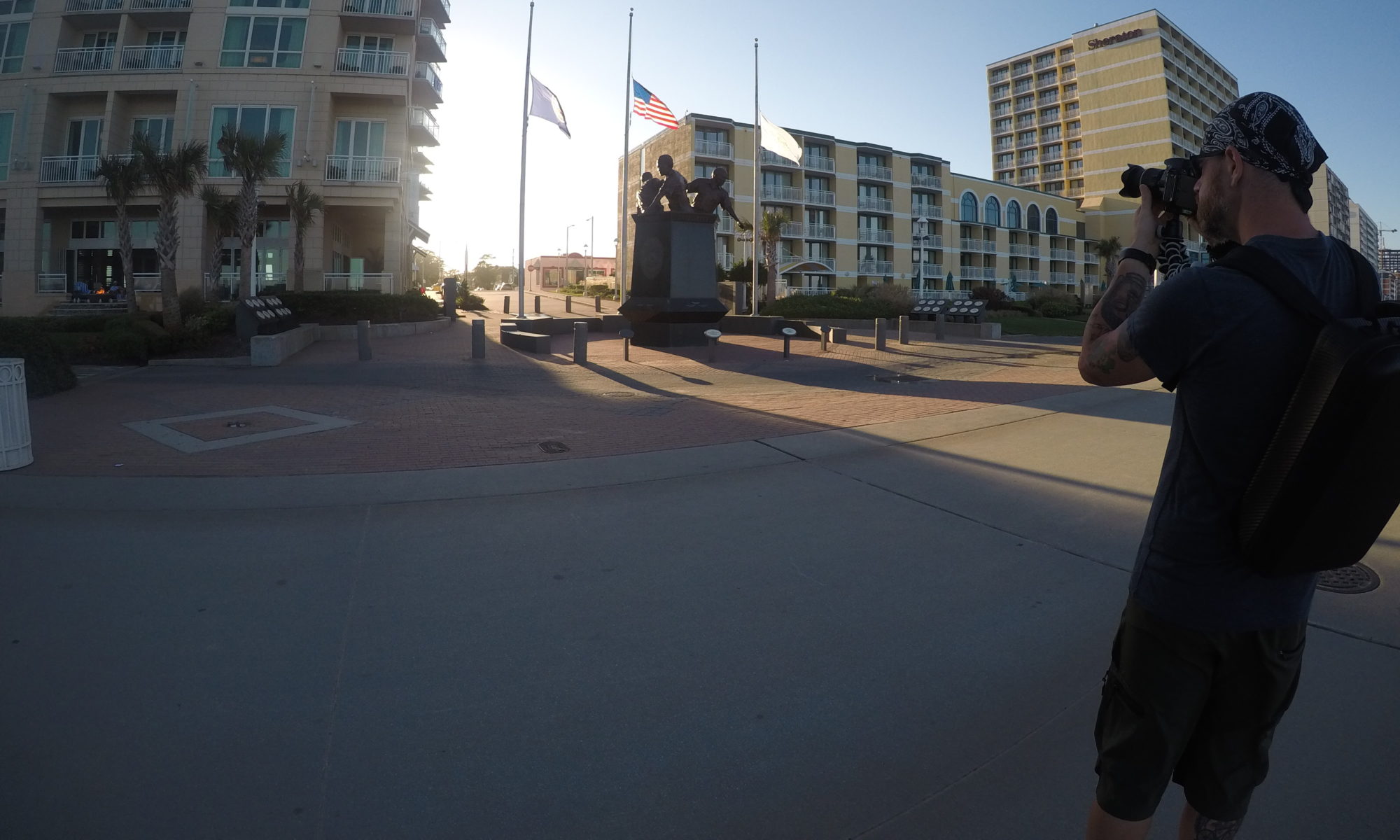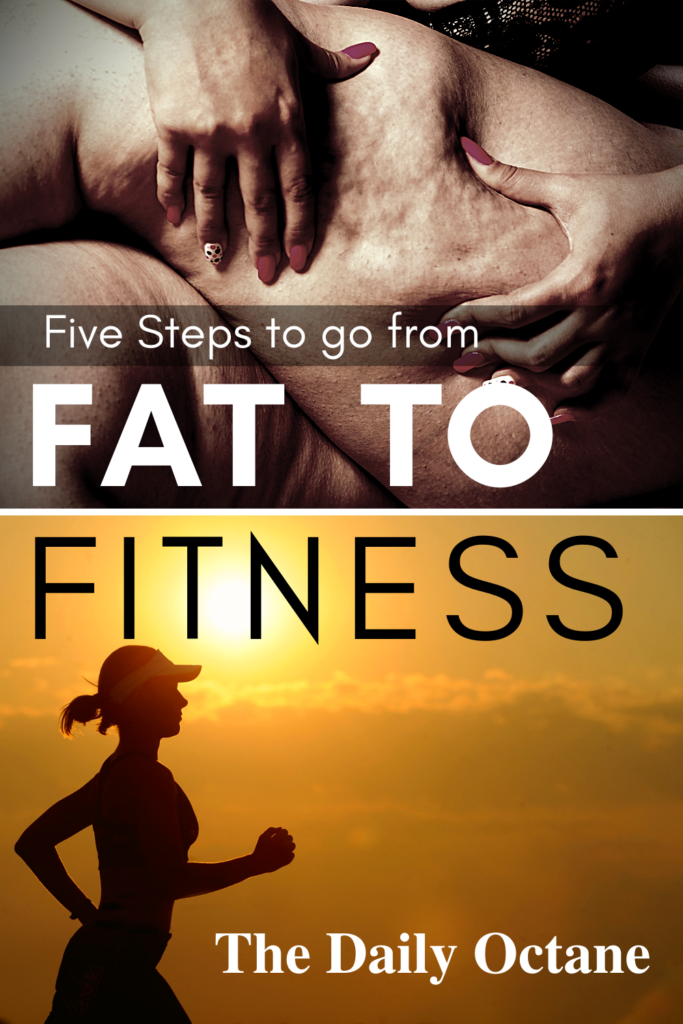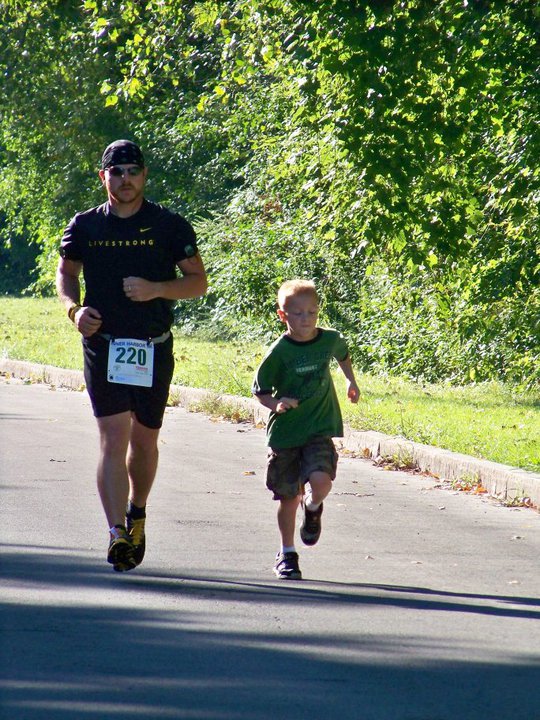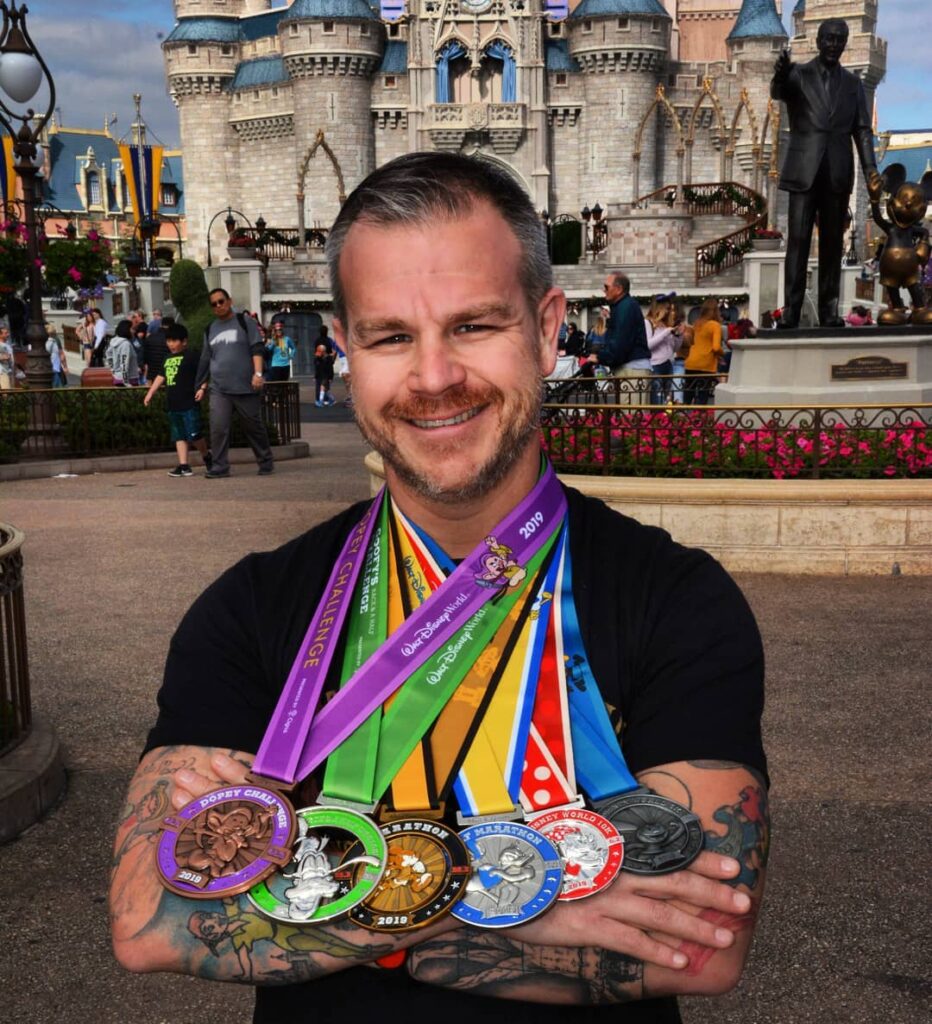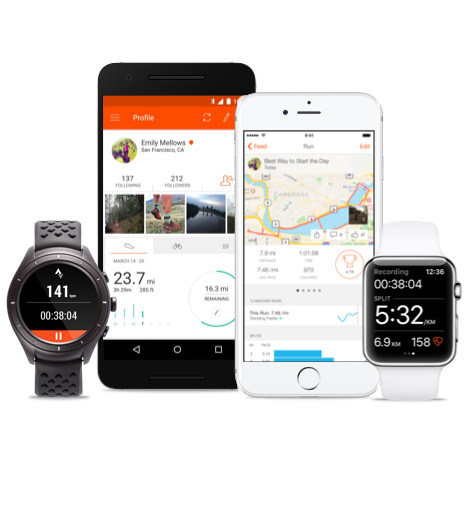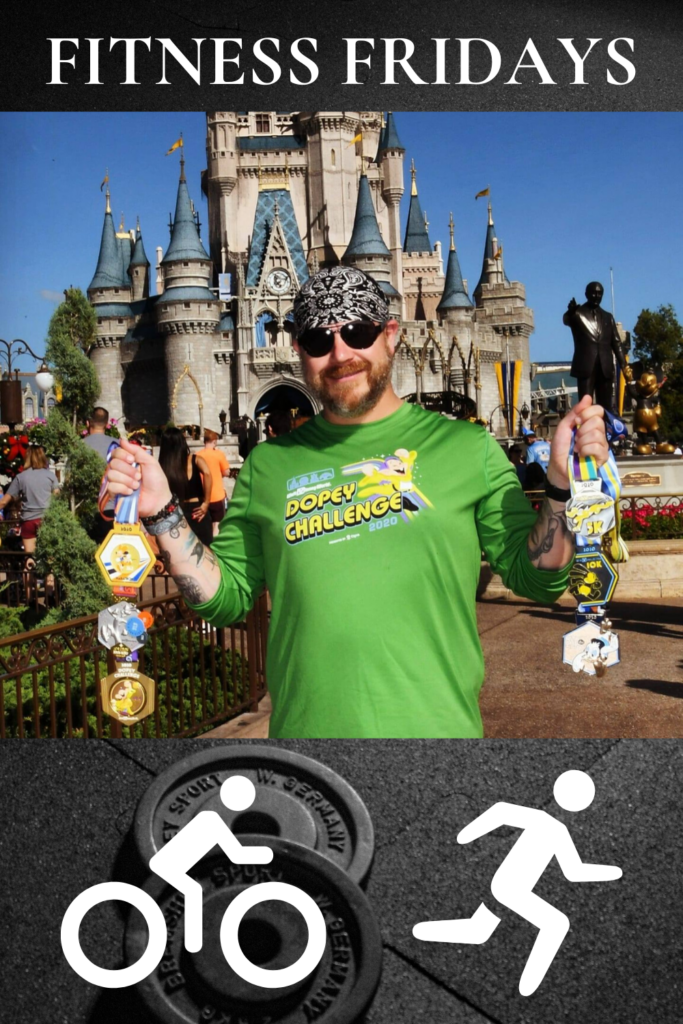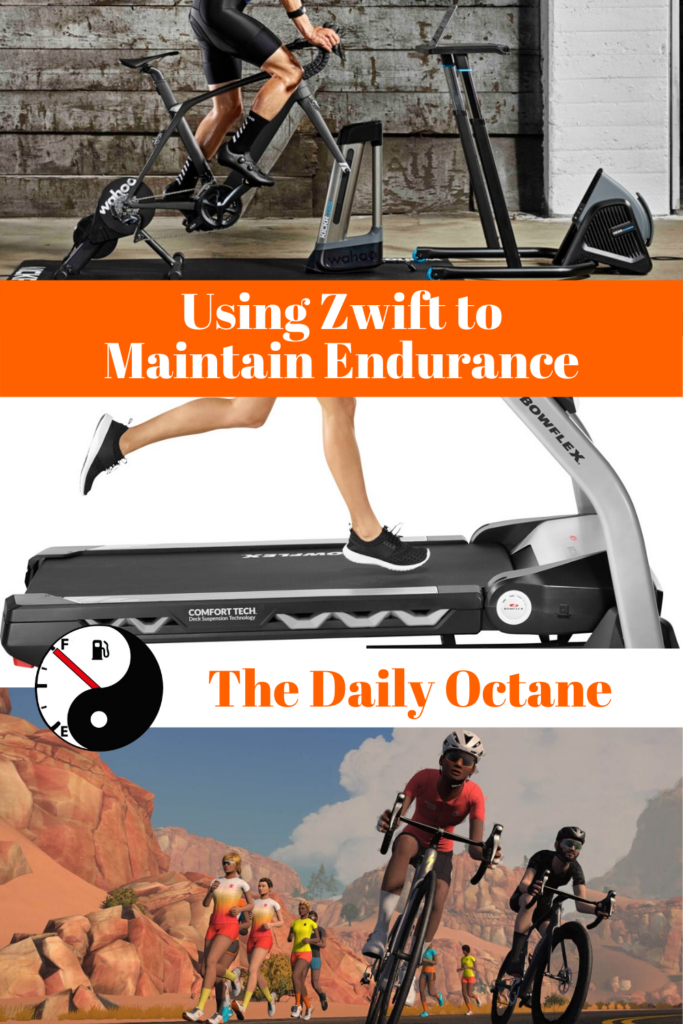
Trainers and Treadmills are hell
When I went through my initial weight-loss journey in 2010, I lost a large majority of the pounds on a stationary bike. For distraction purposes, I parked my recumbent in front of a television. That allowed me to combat what was sometimes three hours of torture. That summer I purchased my first bicycle and began riding on the road. I couldn’t believe how superior being outside was to that stationary bike.
Read about my weight loss journey here
Running joined cycling that summer as well. I ran almost daily on a fine gravel path near my home. The scenery, with its natural beauty, was the perfect background for me to find peace while I went through the personal hell of run training.
As is the way of the world, all good things must come to an end. That winter, when the weather finally became too cold, I could no longer ride outside. At least I was able to run. I continued that right into the most frigid of months. One day, over a beer, a fellow cyclist made aware of bike trainers.
Lesser of all the evils
Bike trainers are a device a cyclist can use indoors to continue their training throughout the year. There was a limited number of options in 2011. You could go with a fluid trainer, which had its internal components encased in a viscous liquid that provided resistance. A magnetic trainer was another option. It used opposing magnets to provide the resistance while you pedaled.

Rollers were a niche trainer option for only the most hardened and insane of cyclists. They were just what the name implies. You rode your bike, unconnected to anything, on a series of tubes with bearings that made you feel as if you were actually riding. The reality is that one wrong move would send you flying off the rollers to certain death. In reality, you probably wouldn’t die. However, I bet you would break something and it would most likely be a lamp or table.
Cycling on a trainer is the worst
I went with a MAG trainer, which was coincidentally magnetic. The first time I attached my bike to the device, I was full of hopeful expectations. I imagined it would feel just like riding my bike on the road. It wasn’t. Not one bit. I am fairly certain I only lasted about ten minutes that first time. Why? Oh, there are so many reasons:
- When you ride your bike outdoors, there is a sway to your body that you can use to apply power to pedals. That isn’t possible since the bike is locked into a very heavy device.
- When you ride your bike outdoors, you can view ever-changing scenery because you are generally going 15-20 mph. The absolute opposite is true on a trainer. I can only stare at that lonely house plant for so long.
- When you ride your bike outdoors, you can take pedaling breaks because of downhills. Sometimes you get to pedal harder because you are climbing up a hill. Basically, things are constantly changing. Not on a trainer. On the trainer, you pedal. You pedal only what that horrible trainer gives you. That is all.
- When you ride your bike outdoors, you get to feel the wind. As your body is heating up from exertion, the wind from your speed is there to keep you cool. That is not the case on a trainer unless you put a fan in front of you. That is highly suggested, by the way. However, even with a fan, it never feels the same. I believe it is the singular direction and speed of a fan that leaves it feeling artificial.
- When you ride your bike outdoors, you can join and race other cyclists. On a trainer, you generally lose that. Sure, you can set up multiple trainers in your home. Let’s be honest here, how many of us have 500 square foot living rooms to fit a whole peloton of bikes?
Due to this amassed number of complaints I have about trainers, I seldom used mine. Each and every winter would come with me deciding to bite the bullet and ride my trainer. Every winter would also see me get about two weeks into that decision and then completely change my mind. Trainers suck. PERIOD.
The Dreadmill
Treadmills do not even require too much explanation. While I am certain that a relatively small percentage of the population will even ride a bike on a trainer, I am positive that a vast majority have run on a treadmill at least once. While there are plenty of benefits to running on a treadmill, the physics of it are just different enough from running on the road that I struggle mightily with it.
For some reason, I am always slower on a treadmill. I am convinced it is because my gait is different on the treadmill, likely due to the sense of limited space to stride. The continuous thud of my steps mixed with the mechanical hum of the motor and belt is also a distraction that takes me out of my zen like space I try to find when I run outdoors. I have avoided treadmills almost completely during my years of running because treadmills suck. PERIOD.
Enter the great new hope
When I explained trainers earlier, I did not include one category of trainer: Computerized Trainers. There were computerized trainers on the market at that time. TacX, for example, sold a system with a slew of devices that offered a nearly realistic simulation of riding outdoors. You had the option of changing elevation and could see where you riding in the world. It came with a load of bells and whistles. It also came with an outrageous price tag. I didn’t include that category because professional cyclists and human performance organizations were the only consumers of them.
That began to change in 2013 when several companies introduced Smart Trainers to the marketplace. With this new, more affordable option, you could connect a pc, a tablet, or your smart phone to the device via ANT+ or Bluetooth technology. Now, you could use software to control the resistance of the trainer. Even more importantly, software companies could combine mapping technology and networking to introduce a whole new riding experience.
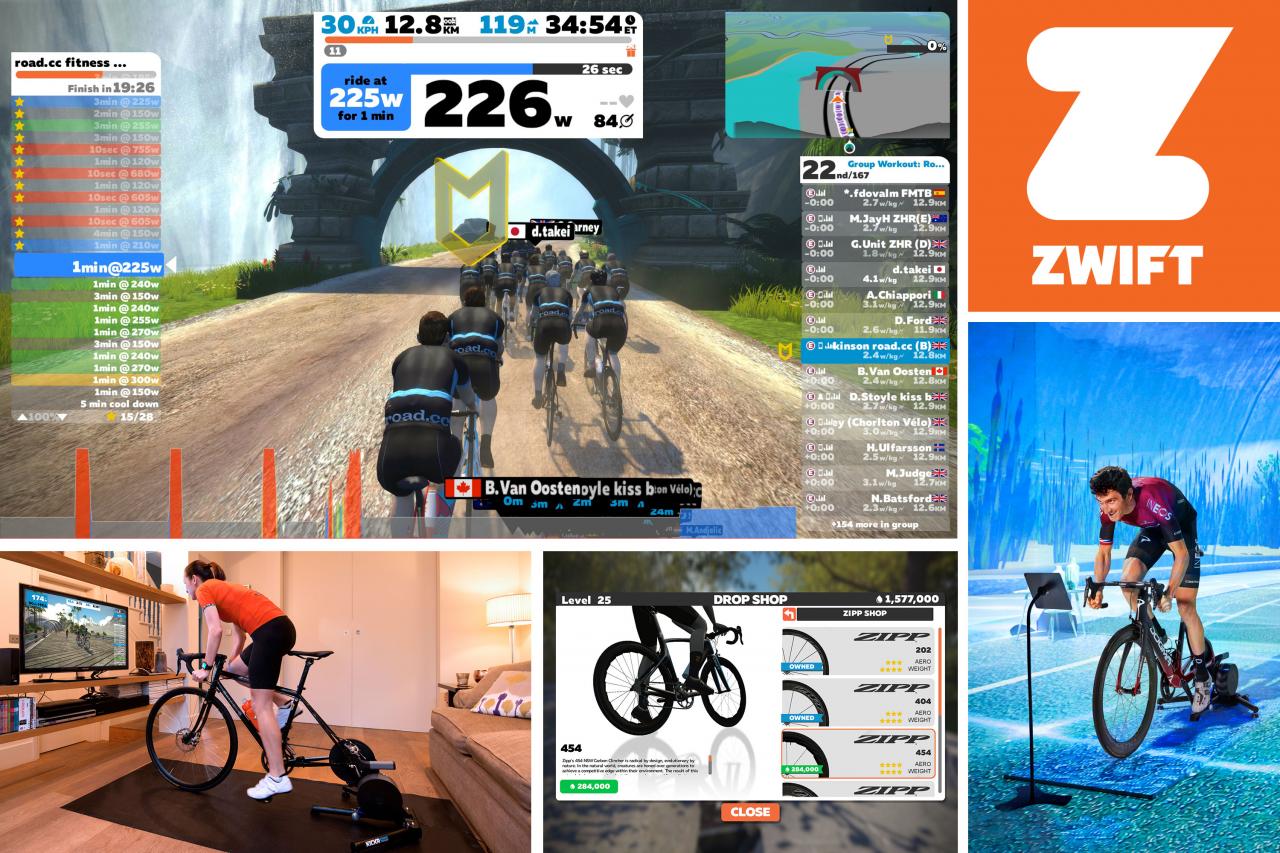
Pay to play or in this case, ride
Zwift started offering subscriptions in October of 2015. What that subscription gave you was access to a virtual world, akin to a video game. In this digitally rendered, three dimensional world, you could ride your bike along a network of roads until you heart was content. They had flats, hills, and even mountains in their fictional land of Watopia.
Zwift communicated through your Smart Trainer software to control the resistance of your trainer. As you climbed a hill in the virtual world, it became harder to pedal. As you descended the hill later, it became easier to pedal. Absolute genius. Another amazing aspect of the Zwift platform, is that all around you were other cyclists. Each and every person on a bike in that world was the avatar of a real cyclists in their home or gym using similar technology.
Time to join the cool kids
I waited one year from its release before purchasing my setup. I went with a Wahoo Kickr Snap. You had two options with Wahoo. With the main Kickr product, you removed your rear wheel and temporarily attached your frame and chain to the device. With the Kickr Snap option, your back wheel stayed on and you locked the rear wheel of your bike against a flywheel. The primary difference is that the first option allowed for that gentle sway I referred to earlier in this article. Basically, it felt slightly more “road-like.”
This setup was a godsend for me. That winter and the following one, I used the Wahoo Kickr Snap with Zwift and road indoors plenty. Due completely to that, my strength, speed, and endurance in cycling began to improve year after year.
Doth my eyes deceive me?
One day, during my third season using Zwift, I suddenly saw something on my monitor while I was riding that confused me. My brain was reeling. I actually stopped pedaling and turned my bike around in the virtual world. I had to ride back and confirm my thoughts…Sure enough, I had actually seen someone running on the side of the road in Watopia. Suddenly, Zwift was no longer just for cyclists.

I did some research. How was I going to be able to run in the virtual world too? Surely, this is a technology that belonged in a technoholic’s home. Unfortunately, I was quickly met with defeat. I began searching Zwift’s website for the setup information. It was only in a beta at that time, meaning you needed to be invited in. For the next year, the ability to run inside Zwift’s platform was limited to only very high end treadmills. That was a problem for two reasons. High end treadmills are unbelievably expensive and I still hated treadmills. Regardless of these truths, I still coveted the idea and felt a small pang of jealousy ever time I saw a runner in Zwift.
More ways to play
Instead of going out and spending five thousand dollars on a treadmill to join the fun, I made the choice to purchase something else Wahoo had brought to the marketplace. During the previous year, they released the Kickr Climb. With this device, you removed your front wheel and attached your front forks to the Climb. It connected to your trainer via bluetooth. While you were riding in the virtual world, the Climb would assess the gradient of the road you were riding. When you began to ride up a hill, the Climb would elevate the front of your bike, simulating the slope of the road. When you descended, the opposite would occur.
This new option on the platform created an even more immersive experience. I rode more last year with the Climb than I did in previous off-seasons. When this past fall arrived, I once again took a gander at the options for running in Zwift. While I was encouraged by seeing more treadmills availble, they all still lived in the $3-4 thousand dollar range. I was not that interested in suffering on a treadmill with that price. Again, Wahoo came to my rescue with a another new device.

This blew me away
The Headwind actually popped up at the end of the previous winter, but I wasn’t going to spend the money on something new at the end of the indoor riding season. The headwind was a “smart” fan you placed in front of your cycling setup. Like the Climb, it connected via bluetooth to your Kickr. The Headwind read your speed in the virtual world and matched it with the speed of the fan. Now, you effectively felt the wind while you were riding. Suddenly, the line between indoor and outdoor riding was truly starting to blur.
Over the last couple of years, Zwift has also greatly increased their riding options. There are multiple virtual worlds you can choose from. Some are totally invented like Watopia. Others are based solidly on the real world, like London, Richmond, and Innsbruck. New York City’s Central Park is also in the software but it features a very interesting format. In this futuristic version of the park, you can ride the park loops that have made the place famous, or you can ride up technologically advanced ramps that lead to a course in the sky. It allows for the scenic New York City skyline as a backdrop while you ride up and down some pretty challenging elevation changes.
Impulse buys are the worst
A couple of days after Christmas in 2019, my girlfriend and I were walking into Dick’s Sporting Goods in Destiny USA, which is the local mall here in Syracuse. As you first walk in, there is sometimes a row of treadmills for sale. She looked over to me with hope. Unlike me, she is a treadmill runner. At that time, she had been regularly driving to the gym at night to run on their treadmills. She wanted me to buy her one. Ugh. I was pleasantly surprised to see all the treadmills were heavily discounted after the holiday.
That very night I drove home with a Bowflex BXT216 treadmill hanging out of the back of my Toyota Prius. It took me a couple of days to hook it up and several more before I gave it a real try at running on it. I still hated the treadmill and didn’t see myself using it a lot, but my girlfriend was in her glory. She spent nearly every evening on it for the next month, but I returned mostly to my bike.

About two weeks ago, one of my clients was talking to me about her Zwift riding experiences. We were discussing the additional attachments I had purchased over the years and she asked me if I had gotten a treadmill yet, specifically to run inside using Zwift. I replied that I had just bought a treadmill but it wasn’t one of the ones listed on their website. She proceeded to tell me that the website info isn’t totally accurate. A Zwift rep told her that as long as the treadmill has bluetooth technology, it should work.
What?!?!
Is the treadmill a thing now?
I ran home after my last client and made my way to the gym in my house. My beautiful Trek Domane was sitting there, attached to my Wahoo Kickr Snap and Climb. Sitting in front of that was the Headwind. Above that was the monitor I use while riding. Next to that insane cycling setup is my new treadmill. I turned on the software, clicked on the RUN tab on the load screen. There were three options for syncing it. You can connect to a heart rate monitor, cadence counter, and the treadmill. With bated breath, I turned on my treadmill and touched the icon on the screen.
Immediately it connected. Oh my god. I stepped onto the treadmill and tried it out. Sure enough, my avatar was walking on the screen. I increased the speed and the “me” on the screen ran at the same pace. I put on my heart rate chest belt and connected that as well. Success. But I was missing the cadence. I was able to grab a Run Pod made by Zwift on Amazon. That arrived yesterday and I tried it out last night. Immediate Success.
After all these years, I now have a complete setup in my basement to allow for multi-sport training. It is perfect timing too, because I have my first multi-sport event this coming May. I will be competing in a Bike-Kayak-Run event in Schenectady. I have never participated in one of these, but being well trained will help ease my anxiety.
If you have considered the Zwift system, which works with several different trainers and treadmills, I can highly recommend it. It has been a vital part of my training regiment for many years and will continue to be for many more years to come.
Christopher Hess, LMT
